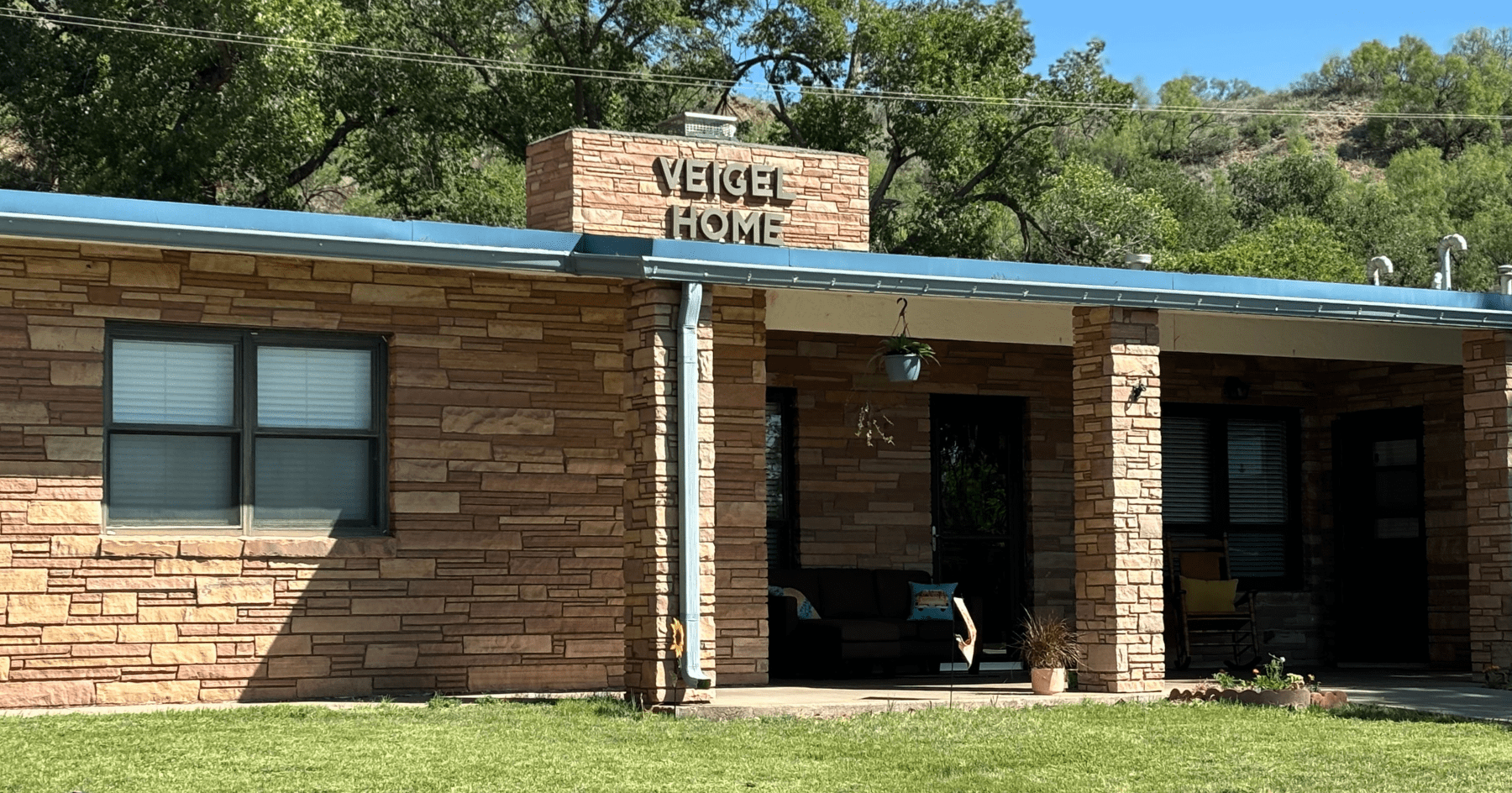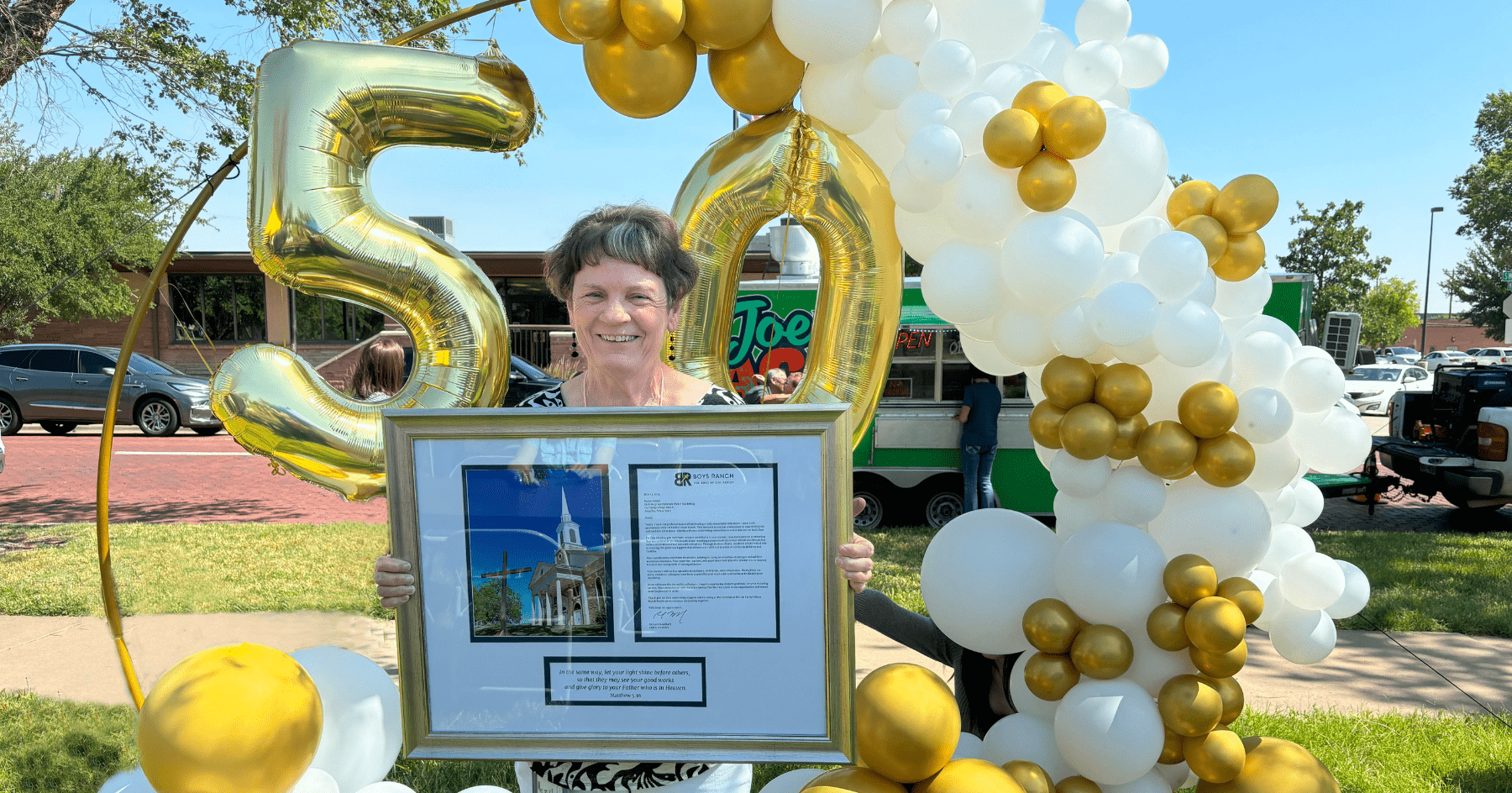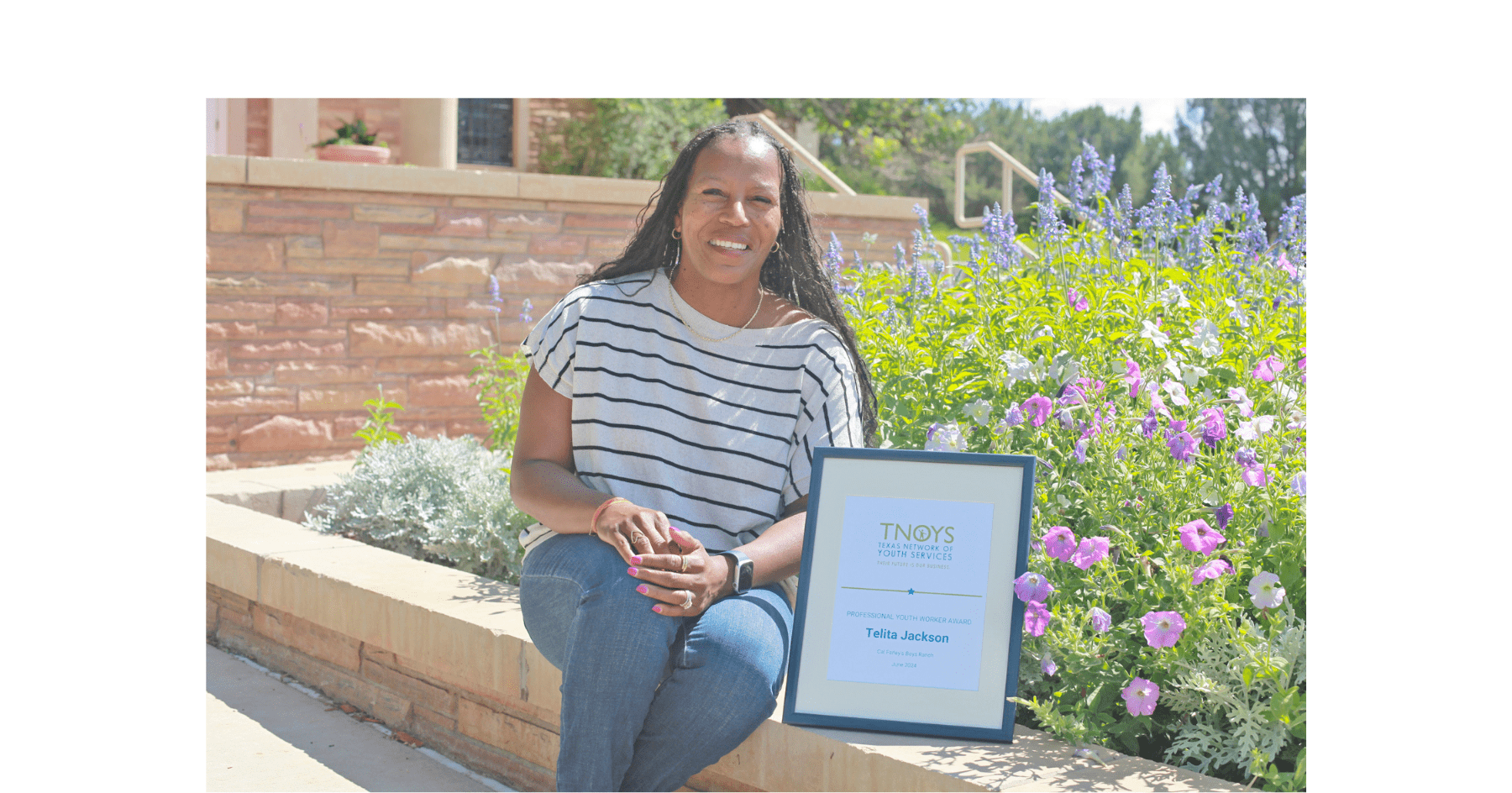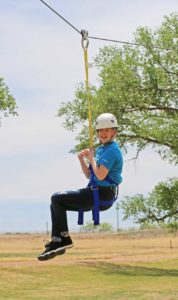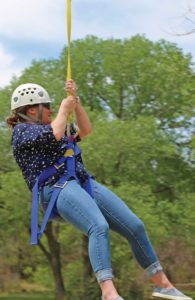Jamie, 18, looked down at the 45-foot drop directly in front of her. A wry grin crept across the corner of her mouth.
About 20 feet to her right, Director of Clinical Intervention Services Tiffany Carpenter looked down from the Boys Ranch Challenge Course tower and thought something entirely different.
Balancing the swing of emotions on both sides of the tower was Adventure-Based Services Coordinator Kale Dabling. The reassuring figure moved back and forth between them, checking their dual-locking harnesses, each capable of withstanding 5,500 pounds of pulling force, and safety lines. Each strapped on a sturdy helmet.
An if-all-else-fails tether ensured neither was going anywhere until they were ready and Dabling’s final safety check was complete.
“Lane ready?” Dabling called to the ground below.
“Lane ready, zip away!” answered Luke Benton, head of Cal Farley’s Adventure-Based Services, confirming each of the ladies had a clear path to follow.
Dabling reached left and right, unhooking the two tethers. Released to her own timing, Jamie leapt from the platform, zipping above the field with Carpenter close behind on the adjacent galvanized steel cable.
An outsider could be forgiven for thinking an afternoon ride on the zip line like this was nothing more than fun and games. Yet, at Cal Farley’s Boys Ranch, activities like this — or others, like fishing, working on projects or other side-by-side interactions — are the site of some very important work.
At Boys Ranch, counselors’ offices don’t see much use. The work Carpenter and her team of five interventionists accomplish with our young people doesn’t happen sitting across a room talking directly about a child’s problems.
Their brains simply don’t work that way yet.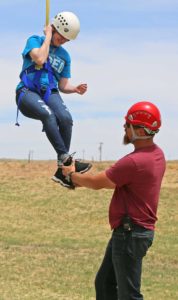
“Our kids, they come from trauma,” Carpenter explained. “If we do a lot of talk therapy, that’s going to be too threatening for them. If you’re doing something side by side, that takes a lot of the pressure off. And, we know that the parts of the brain we want to work on are the relational piece and the emotional piece. We know from our training that side-by-side activities that involve movement or repetition … help those specific parts of the brain further develop.”
About 20 percent of Boys Ranch’s residents will go through direct one-on-one or group counseling during their stay at Boys Ranch.
“Counselors can relate interventions to the front-line workers, so even if the child isn’t in services, they’re getting some kind of benefit,” Carpenter said.
Whatever activity or approach is best for the child, Cal Farley’s meets the child where they are to provide the right service to meet their needs!
